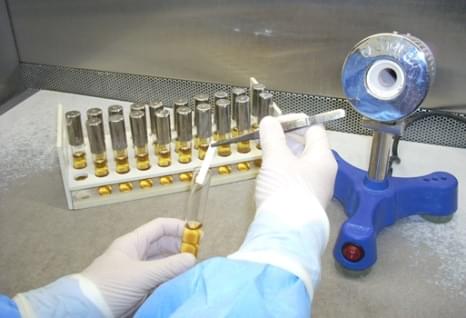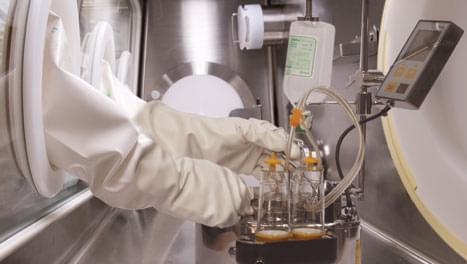- You are here: Home
- Services
- Cell Services
- Cell Line Testing and Assays
- Sterility Testing
Services
-
Cell Services
- Cell Line Authentication
- Cell Surface Marker Validation Service
-
Cell Line Testing and Assays
- Toxicology Assay
- Drug-Resistant Cell Models
- Cell Viability Assays
- Cell Proliferation Assays
- Cell Migration Assays
- Soft Agar Colony Formation Assay Service
- SRB Assay
- Cell Apoptosis Assays
- Cell Cycle Assays
- Cell Angiogenesis Assays
- DNA/RNA Extraction
- Custom Cell & Tissue Lysate Service
- Cellular Phosphorylation Assays
- Stability Testing
- Sterility Testing
- Endotoxin Detection and Removal
- Phagocytosis Assays
- Cell-Based Screening and Profiling Services
- 3D-Based Services
- Custom Cell Services
- Cell-based LNP Evaluation
-
Stem Cell Research
- iPSC Generation
- iPSC Characterization
-
iPSC Differentiation
- Neural Stem Cells Differentiation Service from iPSC
- Astrocyte Differentiation Service from iPSC
- Retinal Pigment Epithelium (RPE) Differentiation Service from iPSC
- Cardiomyocyte Differentiation Service from iPSC
- T Cell, NK Cell Differentiation Service from iPSC
- Hepatocyte Differentiation Service from iPSC
- Beta Cell Differentiation Service from iPSC
- Brain Organoid Differentiation Service from iPSC
- Cardiac Organoid Differentiation Service from iPSC
- Kidney Organoid Differentiation Service from iPSC
- GABAnergic Neuron Differentiation Service from iPSC
- Undifferentiated iPSC Detection
- iPSC Gene Editing
- iPSC Expanding Service
- MSC Services
- Stem Cell Assay Development and Screening
- Cell Immortalization
-
ISH/FISH Services
- In Situ Hybridization (ISH) & RNAscope Service
- Fluorescent In Situ Hybridization
- FISH Probe Design, Synthesis and Testing Service
-
FISH Applications
- Multicolor FISH (M-FISH) Analysis
- Chromosome Analysis of ES and iPS Cells
- RNA FISH in Plant Service
- Mouse Model and PDX Analysis (FISH)
- Cell Transplantation Analysis (FISH)
- In Situ Detection of CAR-T Cells & Oncolytic Viruses
- CAR-T/CAR-NK Target Assessment Service (ISH)
- ImmunoFISH Analysis (FISH+IHC)
- Splice Variant Analysis (FISH)
- Telomere Length Analysis (Q-FISH)
- Telomere Length Analysis (qPCR assay)
- FISH Analysis of Microorganisms
- Neoplasms FISH Analysis
- CARD-FISH for Environmental Microorganisms (FISH)
- FISH Quality Control Services
- QuantiGene Plex Assay
- Circulating Tumor Cell (CTC) FISH
- mtRNA Analysis (FISH)
- In Situ Detection of Chemokines/Cytokines
- In Situ Detection of Virus
- Transgene Mapping (FISH)
- Transgene Mapping (Locus Amplification & Sequencing)
- Stable Cell Line Genetic Stability Testing
- Genetic Stability Testing (Locus Amplification & Sequencing + ddPCR)
- Clonality Analysis Service (FISH)
- Karyotyping (G-banded) Service
- Animal Chromosome Analysis (G-banded) Service
- I-FISH Service
- AAV Biodistribution Analysis (RNA ISH)
- Molecular Karyotyping (aCGH)
- Droplet Digital PCR (ddPCR) Service
- Digital ISH Image Quantification and Statistical Analysis
- SCE (Sister Chromatid Exchange) Analysis
- Biosample Services
- Histology Services
- Exosome Research Services
- In Vitro DMPK Services
-
In Vivo DMPK Services
- Pharmacokinetic and Toxicokinetic
- PK/PD Biomarker Analysis
- Bioavailability and Bioequivalence
- Bioanalytical Package
- Metabolite Profiling and Identification
- In Vivo Toxicity Study
- Mass Balance, Excretion and Expired Air Collection
- Administration Routes and Biofluid Sampling
- Quantitative Tissue Distribution
- Target Tissue Exposure
- In Vivo Blood-Brain-Barrier Assay
- Drug Toxicity Services
Sterility Testing
Sterility testing of cell lines, media, in-process material and final products must be demonstrated during the manufacture of pharmaceuticals and medical devices.
Experienced microbiologists in Creative Bioarray work directly with the client to ensure recovery method suitability is appropriate for each product configuration.
Creative Bioarray offers the following tests under GLP or GMP:
- Direct Inoculation Sterility for Final Bulk
- Direct Inoculation Sterility for Final Vials
- Direct Inoculation Sterility for Prebanking or Cells at limit
- Direct Inoculation Sterility for Unprocessed Bulk
- Direct Inoculation Sterility for Cells and Virus Banks
- Membrane Filtration Sterility



Three sterility methods are employed at Creative Bioarray.
Membrane filtration
In this procedure the product if filtered or the device is rinsed, and the rinse liquid passed through a membrane filter. Any microbial cells are retained by the filter. Different filtration units are used for differing products.
The pharmacopeias and 21 CFR 610.12 recommend using two media for both the immersion and membrane filtration methods. In both test methods the test article or membrane is incubated for 14 days in the test media.
Advantages of the membrane filtration method include:
- accommodation of large volume samples (up to 500 ml)
- removal of inhibitory substances that inhibit the growth of microorganisms by rinsing the filter membrane with a suitable agent.
Direct inoculation
This method is only used when membrane filtration is not possible the sample is inoculated directly into the media or the device is placed directly into the media. This method requires the test article be inoculated directly into test media. Test articles are incubated for 14 days followed by testing for microbial contaminants.
The advantages of the direct inoculation method are:
- sterility testing for materials that cannot be easily filtered
- smaller volumes of test article can be used
Microbial contamination of the test area is assessed throughout the duration of the sterility test, by means of air sampling, settle, contact plates and personnel plates. Creative Bioarray produces and quality controls all of the media used for sterility testing and the media production faciltiy is UKAS accredited.
Direct transfer
This method is the method of choice for medical devices because the device is in direct contact with test media throughout the incubation period. Viable microorganisms that may remain in or on a product after sterilization have an ideal environment within which to grow and proliferate. The direct transfer method benefits these damaged microorganisms. The entire product should be immersed in test fluid.
Microbial detection is performed essentially like direct inoculation after a 14 day incubation. Creative Bioarray offers custom protocols to accommodate parts of devices and solids and will work with you to determine the best way to test your articles.
For test articles produced by non-aseptic manufacturing processes, a bioburden (or microbial limits) detection assay should be performed. Furthermore often, it is necessary to evaluate a non-sterile test article for "objectionable organisms". A microbial limit approach is recommended for the evaluation for objectionable organisms.
If you have any special needs in assessing the sterility of your cells, please contact us for this special service. Let us know what you need and we will accommodate you. We look forward to working with you in the future.
Explore Other Options
For research use only. Not for any other purpose.

